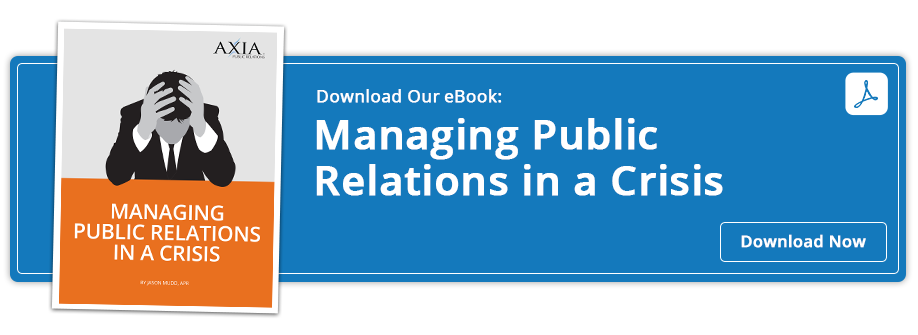 Learn the PR tools you can use to effectively manage any crisis
Learn the PR tools you can use to effectively manage any crisis
When not handled correctly, a crisis can shed a negative light on your entire company. Handled well, it provides an opportunity for your company to demonstrate that it can be tough under pressure.
According to a study Stanford University conducted, companies that provide quick, truthful responses and keep a steady grip during a crisis fare much better in terms of public image and profitability. Your company can learn something from these lessons on the right (and wrong) ways to manage a crisis.
Case No. 1: The importance of taking responsibility for your mistakes: Apple has been teaching this lesson over and over since the release of its much-touted iPhone 6. The product has been plagued with problems from technical glitches that made it unusable for some customers to structural issues which threaten the integrity of the device. Attempts to fix the bugs created more troubles, forcing purchasers to repeatedly download potential solutions.
The company has apologized at each step of the process, acknowledging that it is at fault, in addition to promising swift resolutions. It also used the opportunity to educate and remind users about proper handling of the phones. This is a far cry from just a few years ago when then-CEO Steve Jobs blamed consumers and how they were holding their phones for issues with the iPhone 4.
Admitting your company’s mistakes shows you are in control and, since you know what the problem is, that you will be able to fix it.
Case No. 2: Immediately start to work on fixing the problem. Don’t waste time finger-pointing or playing the blame game. The company Buffer demonstrated this well when it found its system hacked and used to create fake posts on Facebook.
Buffer could have tried to figure out which individual at the company was responsible for the security lapse. Instead, it made the right decision by bypassing all that in order to get to work locating the exact problem and repairing the damage. In addition, it provided frequent updates on its progress.
Open communication and swift resolutions serve to restore customers’ faith and encourage them to wait it out instead of running to your competition.
Case No. 3: Stay in control of your company’s messages. Adobe provided an example of the wrong way to do this when it faced a security breach that affected more than 100 million customers. There was no communication with users and nothing on the company website, leaving people in the dark about what actually happened and what, if anything, they should do.
To make matters worse, a majority of the news reports concerning the incident clearly attributed outside sources that were not affiliated with Adobe. When there is no information forthcoming from your company, it allows others to craft your messages and influence public opinion on your behalf. This also makes you appear weak, ineffective and uncaring to your customers.
When there is a crisis, it is crucial that all information surrounding it comes from your trained spokesperson or representative.
Any company can shine when things are going well, but it takes planning, communication and a well-crafted PR program to survive a crisis. Studies have shown that approximately 40 percent of companies that face a major crisis will not survive it, so it is important to protect yourself.
While there is no standard formula for handling a PR crisis, there are tools, tactics and lessons to be learned from the examples of others. Axia can help by serving as your crisis management guide. We will ensure that you craft the right responses and reach key stakeholders to protect your brand image. Download our e-book Managing Public Relations in a Crisis or contact us today to begin guarding your reputation and maintaining public trust.
Lisa Goldsberry is a writer for Axia Public Relations with more than 15 years of public relations experience. She specializes in business, higher education and technology PR. Connect with Axia Public Relations on Twitter @axiapr.
Featured image credit: ThinkStockPhotos.com
Topics: public relations, crisis communications



Comment on This Article